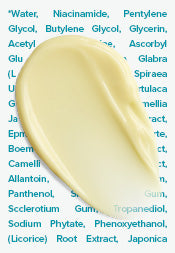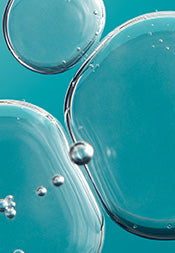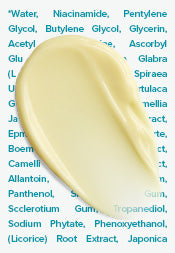The Best Ways to Treat Acne and Sensitive Skin
Dealing with acne at any age is distressing, but when sensitive, redness-prone skin is also a concern, treating the acne becomes even more challenging. How do you control acne without making sensitive skin worse? What are the best sensitive-skin products if you have acne? Or how do you get rid of pimples without causing sensitive skin to flare up? We have the answers: The best acne products for sensitive skin can quickly diminish acne while also soothing temperamental skin. It is possible!
How to choose the best cleanser for acne and sensitive skin?
Understanding and devising a skincare routine best suited for sensitive and acne-prone skin will allow your skin to thrive. The first step in learning how to treat sensitive acne-prone skin is cleanser—but not just any cleanser. Forget soaps and bar cleansers (all have issues like causing dryness or leaving a pore-clogging residue) and instead use an acne face wash for sensitive skin formulated to address the needs of acne-prone skin without irritating it. This can prevent pimples from forming and the regular occurrence of breakouts.
It’s critical that your cleanser and every other skincare product you apply is fragrance-free, because fragrance is a leading cause of skin allergies and irritation. This is a big concern for sensitive skin.
Avoid abrasive scrub-type cleansers, stiff-bristled cleansing brushes, and cleansers that contain essential oils, which are little more than fragrant oils that can make signs of sensitive skin worse.
What are the best daily face moisturizers for acne-prone sensitive skin?
When shopping for skincare products for acne-prone and sensitive skin, the key is texture: Avoid creams and oily lotions, and use a hydrator with a lightweight gel, liquid, or thin lotion texture. If such products don’t provide enough moisture, layer them over a soothing, replenishing, alcohol-free toner and/or water-based serum.
Above all, just as a gentle cleanser for sensitive acne-prone skin should be fragrance-free, so should your moisturizer.
Shopping tip: Look for moisturizers that contain soothing plant extracts such as liquorice root, sea whip extract, willow herb, willow bark, and beta-glucan. Or consider a pollution-neutralising serum with antioxidants that play a vital role in keeping skin calm. Both approaches help to minimise signs of sensitive skin without making acne worse. The same is true for beneficial ingredients like niacinamide, ceramides, and hyaluronic acid.
The best acne treatment products for sensitive skin
Without question, the best acne removal products for sensitive skin types include gentle, fragrance-free face washes or creams (sensing a pattern here?) that contain the two proven over-the-counter acne-fighting ingredients, benzoyl peroxide for acne-prone sensitive skin and salicylic acid for acne-prone sensitive skin. Together, and when used consistently, they deliver a one-two punch that leads to clearer skin.
If you’re worried that benzoyl peroxide and salicylic acid are too harsh for sensitive skin, let us reassure you: In carefully-formulated products that contain soothing ingredients, both can work beautifully on sensitive skin (5). If you experience signs of irritation from using these ingredients, reduce the frequency of use and see how your skin responds. Chances are, you’ll see a fast improvement!
Following the tips above will be proof positive that you can find acne products for sensitive skin that really work while helping to visibly improve signs of redness and irritation.
Learn more about acne breakouts and skincare for sensitive skin.
Take care of your skin and keep it blemish-free with skincare best sellers for acne-prone/sensitive skin
References for this information:
Dermatologic Therapy, October 2020, pages 1–6
Skin Therapy Letter, May 2017, pages 5–7
Skin Pharmacology and Physiology, January 2017, ePublication
Journal of the European Academy of Dermatology and Venereology, February 2016, Supplement 1, pages 2–8
The Journal of Clinical and Aesthetic Dermatology, May 2012, pages 32–40
Indian Journal of Dermatology, January-February 2011, pages 2–6












